"Explorers" #2: a look back at the story of a trip to Canada's Far North
Foundation
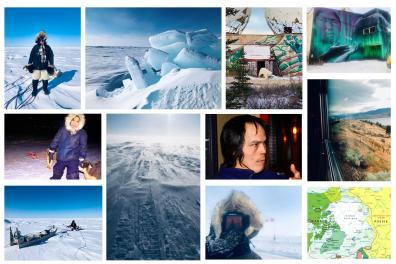
In November 2023, the Foundation shared a twice-weekly series of posts on social networks entitled "Quête arctique, douze billets de voyage du Grand Nord canadien". This series allowed readers to immerse themselves once again in Éric Dugelay's exploratory approach, this time in the heart of Canada's Far North.
The journey began in Montreal, then continued to Churchill, Manitoba, known as the polar bear capital of the world, and Rankin Inlet in Nunavut. Some of the posts were also inspired by three of his previous trips to the region. This series of posts showcased the cultures, languages and civilizations of the American Arctic, and highlighted the cultural diversity of this little-known area. Readers were then transported to local populations, animals and unheard-of landscapes, in the footsteps of the late Jean Malaurie.
Through these stories, the Inalco Foundation is committed to promoting a passion for travel and celebrating the world's cultural richness, while reviving the tradition of travel stories by the great explorers who made the history of Langues'O. Readers have the opportunity to escape through captivating tales and learn more about the fascinating destinations explored by the author.
Find out more about travel writer Eric Dugelay's journey to Canada's Far North below, and stay tuned for more captivating tales to come.
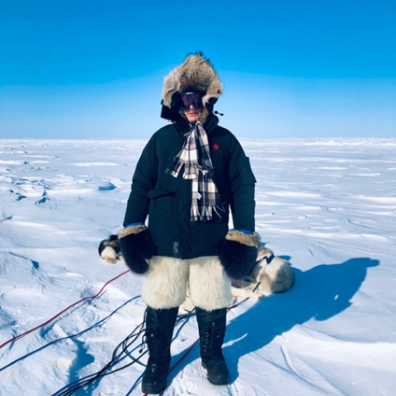
Post 1/12: Northern Pinzutu
Take a long train. Try to see the polar bear. Agree not to tick him off. Blending into the landscape, behaving in the Far North like a cautious Pinzutu, that sobriquet (pronounced pinsout) with which "continental" Frenchmen are saddled on the island of Corsica, another exotic land. It's been twenty-five years since I first set foot in the Far North. It was in Ilulisat, Greenland (69°13' north). And seventeen years for Nunavut, the Canadian territory founded - no kidding - on April 1, 1999. From what I saw of it then..., three days at night in the middle of winter in Pond Inlet (72°42') and a strong desire to return during the day; which I tried unsuccessfully in the summer of 2020 (I was expelled from Yellowknife, Northwest Territories (62°27'), due to Covid-19) and succeeded in the spring of 2021 on Ellesmere Island, Nunavut: Resolute (74°42'), and Grise Fiord, the northernmost of the North (76°25'). So today, I'm embarking on my third real trip to Canada's Far North: heading for Churchill, Manitoba (58°46'), the polar bear capital of the world as the guidebooks call it, and right in the middle of "polar bear season", go figure. It's to Matthew Henson, a racialized person as they say today, that I dedicate this Arctic Quest, a new series of twelve posts from Canada's Far North. To him and the Inuit team, Ooqueah, Ootah, Egingwah and Seegloo, who accompanied him on the first official conquest of the North Pole, on April 6, 1909, forty-five minutes before the arrival of expedition leader Robert Peary. Peary wouldn't let Henson claim victory: he shamelessly appropriated their feat. For his part, his rival Frederick Cook would claim to his dying day that he had beaten them by almost a year, as early as April 21, 1908... Nothing is certain, but some say that the first man to set foot on the North Pole was the Soviet Ivan Papanin, who landed there by plane on May 21, 1937. And the first to reach it by land, Ralph Plaisted, by snowmobile, in April 1968. I was five years old, hence my fascination with the region?
.
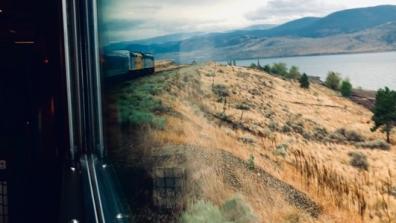
Post 2/12: With Glenn Gould
We travel for nothing, no explanation needed. But this time it's for the bear. I'm obsessed with the bear, and it's to ogle him that I'm heading for Churchill. Boarding in Winnipeg, forty-four hours to daydream, my head against the window of the VIA Rail Canada car. I know how to do that, daydream, I'm looking for that, people look at me sideways when I say it. Memory of a previous trip on the Canadian Pacific, my bear baptism. It was a brown one. We were driving at a snail's pace, and I'd spent hours devouring, alone, every inch of the forest, none of the other passengers paying any attention to the scenery. Suddenly, somewhere between Kamloops and Jasper, "A bear! My carpoolers barely took their eyes off their screens to try and catch a glimpse of the plantigrade disturbed in its gathering. No time to hook my first bear with my IPhone 10, no time to say goodbye, and within seconds he was out of our field of vision. Incredulous, the flight attendant told me: bears are usually on the Winnipeg-Churchill. Two years later, here I am! With a bit of luck, plenty of brown bears, and on arrival, Churchill, population just under nine hundred, and two hundred polar bears. In the meantime, I'm traveling with a sacred monster. At the age of thirty-three in 1965, celebrated the world over, Glenn Gould had chosen Winnipeg-Churchill to mark the end of his pianistic career. From his solitary journey, he had drawn the Trilogy Solitude, a work in three parts, the first of which,The Idea of the North, is as unclassifiable as its author: radio and film, it takes in journalism, sociology, poetry, theater and, in his own words "the dark side of the human soul". Facing me, slumped on his train seat as on that of his Steinway, at the age of Christ on the Cross, Glenn Gould is inhabited, his eyes twinkling, his speech vehement, she tells of her passion for the polar winter, her plan to play her eccentric Bach in the perpetual night of the Arctic ice.
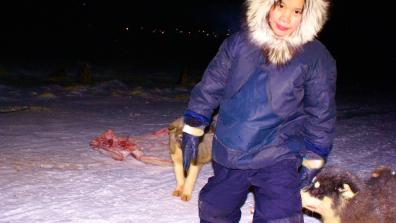
Post 3/12: Polar bear killers
Scanning the boreal forest from my train seat, I lose myself in the landscape. Between wakefulness and sleep, I scan images from previous trips: the howling dogs, the plump face of a certain Jackson, young and proud of his two corpses, the carcasses stored on balconies. In Nunavut, polar bear hunting is permitted from the age of eighteen, twelve with parental consent. The species has been protected since 1973, but the Inuit have retained hunting rights in the Northwest Territories, Nunavut and Quebec. Each year, hunters and biologists agree on a hunting quota for each community. To make up for lost income from the now-banned sale of seal pelts, the Inuit sell part of these quotas. Americans, where polar bear hunting is banned, pay them twenty-five thousand Canadian dollars per bear killed. An Inuit guide is required, and travel must be by dog sled: one thousand dollars per participant per day. Add the cost of the plane ticket to Nunavut and the right to kill sticker: up to thirty-five thousand dollars per bear killed. And no trophies are allowed to be brought home: meat, paws, fur - it's all for the local people, men and sled dogs. The Donald's most determined followers apply these rules without flinching. But beware, the polar bear can run at forty-five kilometers an hour, much faster than a man. If you come face to face with him, don't run away. Look at it, don't scream, but shout loudly, in a deep voice, making the sound "OOOOO". And if a fight must take place and you have a blunt weapon at your disposal, tap, tap, tap, tap, tap, tap, tap, tap, tap, tap, tap, tap, tap, tap, tap, tap, tap, tap, tap, tap, tap, tap, tap, tap, tap, tap, tap, tap, tap, tap, tap, tap, tap, tap, tap, tap. If a bear attacks, hold your position and be ready to fight! Unlike black bears and grizzlies, polar bears rarely make a false attack." I woke up with a start, I was being chased by Jackson, he had mistaken me for a bear.

Post 4/12: An obsession
After two days of travel, Churchill is announced, the networks stammer, everyone rushes to their screens, the stories and the dead, from Kiev to Gaza. Getting off the train is feverish. On the platform, a young man with a round face holds up a sign with my name on it. Aren't his features Chinese? In his evasive reply I hear confirmation. The next day, my host agrees to an exchange in Mandarin, and shares his family plans for the well-being of his only offspring. One would be to give him an education in Luxembourg for his multilingualism, another would see the family move to Pond Inlet, Nunavut, so that the little one can integrate into the Inuit community and learn Inuktitut. I think I detect in plan number 2 a mixture of Canadian self-righteousness and China Daily-style tongue-in-cheek, so promise my help with plan number 1. On my previous trips to the Far North, I'd seen polar bears only in the form of refrigerated skulls and flesh; this year, my odyssey will be that of the living bear. We're just a stone's throw from Nunavut, but this is Manitoba, and polar bear hunting is forbidden - it's time for wildlife tourism! Stunned by the journey, the ubiquitous cautionary injunctions and the true story of a bear musing this week at back-to-school time, should I patiently wait in bed for the arrival of the liberating 4x4 ordered ten months ago, watch "Churchill, Polar Bear Town", a short film by Annabelle Amoros, the chilling testimony of a victim savagely attacked right here by the great predator?...No. With the temperature twenty degrees below zero, I set out to criss-cross the town in alternative mode, walking for instruction in the "points of attraction" (museum, library, post office, church, supermarket), running for the endorphins, always on the lookout, one eye on the back of my head, no fur on my eardrums. That's how I survive two days of wandering, not escaping my nightmare at night, Jackson-the-hunter confusing me with the bear: desire and danger of flirting with the plantigrade.
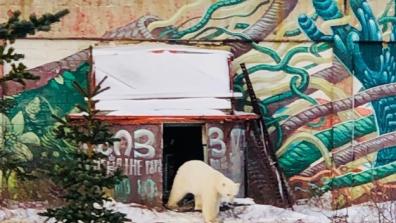
Post 5/12: The great white and techno
Hudson Bay is just beginning to freeze over. Along the coast, our 4x4 rolls along at a snail's pace. Suddenly, on the walkie-talkie: "Bear in the golf balls!" The pickup turns into a dragster, heading for the two-spherical radar station abandoned by the US army. Fifteen 4x4s converge on the site. There he is, the king of plantigrades, consenting to our wishes. His elongated muzzle sniffs the icy air, his almond-shaped eyes expressing no surprise at seeing us. Docilely, his familiar form emerges from the doorway of the hideout, the majestic bear takes a few steps outside, observes the photographers' game and quietly moves away. As soon as he disappears behind the building, we laugh, congratulate each other, ask questions, and the guide swears: the bear never comes this way, only droppings are sometimes found in the building... Anticipating his progress along the coast with our vehicles, we spend the morning with him, rushing back to the cars when he enters the safety zone, shooting him with our IPhones from inside before he flees, frightened by the roar of the engines set off by the drivers: never get the bear used to being close to man. This individual is hungry, so wouldn't he push on into town to steal some garbage left behind by humans? He'd risk prison (a bear prison, of course, with a maximum capacity of twenty-eight bears, currently eight), and in prison he'd have nothing to eat. On the way back, satisfied but suspicious, I'll recount an emotional day watching the whales play off Cape Cod: to our delight the captain of the tourist dhow had easily located them, and for good reason, each one was tagged with a GPS. "Here too," exclaims the guide in a confounding burst of transparency, "all the bears are tagged!" But unlike Cape Cod, wildlife conservationists only release GPS data after twenty days! Phew, so our ballet with the bear had something to do with adventure.
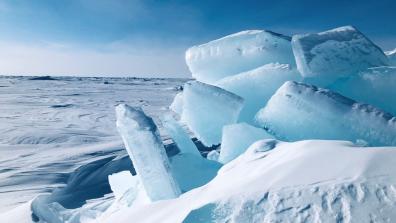
Post 6/12: Inuit knew
April 2021, I'm staying in northern Nunavut, Grise Fiord and Resolute. In Grise Fiord in the 1950s there was no one. The first inhabitants were forcibly sent there from hamlets much further south to enable Canada to assert its legitimacy over Ellesmere Island. It took several decades for the government to atone for its heavy-handed action, death and suffering, and to grant the villagers ten million Canadian dollars. Grise Fiord has one hundred and twenty-nine inhabitants: is sixty-five thousand euros per person enough? Relations between Aboriginals and non-Aboriginals have never been smooth sailing. A little further north in Resolute, we celebrate figures from the past: Her Majesty Queen Elizabeth II, Queen of Canada; Sir Edward Parry (1790 - 1855), who led three expeditions in search of the Northwest Passage; and Sir John Franklin, who, after two overland expeditions, undertook his fatal expedition in 1845, also in search of the Northwest Passage. Since then, no fewer than sixty expeditions have been launched in an attempt to understand the fateful fate of Franklin and his crewmen, the sinking of their two ships, HMS Erebus and HMS Terror, their wandering on the pack ice, botulism by injection from old tin cans, cannibalism in an attempt to survive. In 2014, one hundred and sixty-nine years later, the fascinating discovery of HMS Erebus, and two years later, that of HMS Terror: it was because scientific work worthy of the name undertook to question the Inuit about the stories they had heard, handed down from generation to generation, that in just a few days the area in which both ships had sunk could be determined. Staggering arrogance on the part of the non-natives, who until then preferred to go forward with their own calculations, their own hypotheses, denying the possibility that eyewitnesses among the natives might have testified and passed the message on to their offspring.

Post 7/12: Exploits and truth
In his highly successful "Aesthetics of the North Pole", Michel Onfray cruelly sketches the new explorers of the Great North: "a major dose of masochists aching to realize themselves in, through and for pain." I've met quite a few of them on Ellesmere Island, men and women, their faces weathered, their phalanges missing, a slightly crazed bliss in the depths of their eyes. As for me, a Parisian who had climbed Mont-Blanc twice on short breaks, I'd surely be branded a Monchu, a flowery term from a childhood read, Roger Frison-Roche's "Premier de cordée", the exact Savoyard equivalent of Corsica's Pinzutu, the tourist with a bit of a swagger! But being a masochist and a show-off isn't always enough to achieve the impossible. In these conditions, a moral dilemma. What really happened in 1950 at the summit of Annapurna, the first 8000-meter summit supposedly climbed by Maurice Herzog, whose daughter Félicité denounced the lies. An honest man, Sylvain Tesson recounts the deviation he concedes from the rule he set himself as part of an improbable conquest: in "L'axe du loup, de la Sibérie à l'Inde sur les pas des évadés du Goulag", while his odyssey in the footsteps of the fugitive Rawicz is carried out on foot and on his own, he takes a seat for a whole day in a military machine to cross a swampy plain that's too inhospitable. And when Mike Horn publishes "Latitude zero, 40,000 km to meet the world" recounting his crossing of the earth (mostly oceans) on the equator line, I can't help but exercise my professional skepticism. As for the photography, it too is easily embellished, staged, faked. Back in Grise Fiord, his face ravaged by fatigue and disappointment at not having been able to capture the pixels of the Arctic wolf, wildlife photographer Amit Eshel was genuinely touching, but his attempt didn't stop there: he could rely on the automatic triggers of his connected camera traps. Back in Tel Aviv, he'd have plenty of time to retouch the shot that arrived on his Mac.
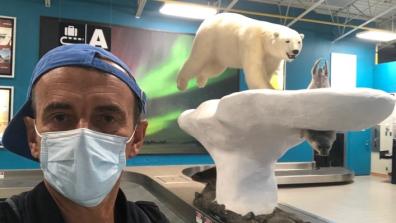
Post 8/12: When I was unwanted
In August 2021, a nasty virus prohibited transatlantic travel. With a few exceptions. Arguing my status as the father of a Canadian woman from Montreal, I landed a flight to Vancouver - five thousand kilometers further west - then took the train and the plane to Yellowknife, capital of the Northwest Territories, an obligatory stopover on the road to the Far North. Despite a verbal green light from the health authorities to fly on to the "small community" of Ulukhaktok (subject to a duly obtained negative PCR covid test), I received a comminatory "Denial of Tourism Travel" email that evening, ordering me to stay put. The following day, I was forced to take off for the South instead of the North, after spending 22 hours locked up in a guest room I'd found on Booking.com (this rarity was run by a Chinese family who had kept their conversation with me to a minimum, albeit through hygienic masks, as they were terrified by my droplets, even though I'd been triple vaccinated). Unsatisfied with my reply to their e-mail, the health authorities had in fact sent me two agents. Neither my landlady nor I had told anyone about our deal, though, so hacking into Booking.com data was probably child's play for them. No sooner had I returned from a very illegal and exotic tour of the city, the two patient but courteous types were there, giving me two choices, put me in quatorzaine (one of the unlikely words from the covid years with swab, containment and antigenic) in the charming burg of Yellowknife, or leave the city. Dupont and Dupond let me propose an answer to my question as to how long I would have to do this, and I suggested twenty-four hours, which was granted. The next day, I was back on the plane for provinces that were only slightly less fussy, managing in extremis to point out to Canadian North that I had been unable to use their duly paid ticket to the Far North. Magnanimously, they granted me a credit note for a later trip. Hence my stay on Ellesmere Island the following year.
I'm so glad I did.
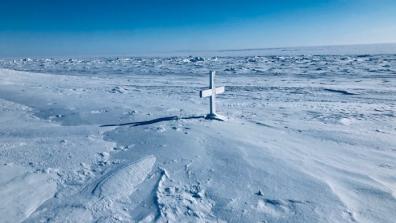
Post 9/12: Every child counts
In July 2022, guest of honor at an ecumenical ceremony in Iqaluit, Nunavut, Pope Francis made a long-awaited and remarkable gesture: he asked for forgiveness. Forgiveness for the atrocities committed over decades by the Catholic staff of the "residential schools" against their aboriginal, Inuit, Métis and First Nations residents. In Lyon, with his eyes riveted to the YouTube broadcast, Father Johannes Rivoire spent a quiet day. There was no mention of his alleged sexual abuse of Inuit children in numerous Nunavut communities over decades. Suspended in 2017, proceedings against him were re-launched in 2022. I, the Pinzutu of the North with Canadian children and a Catholic upbringing, will be keeping a close eye on what happens next. Back in 2010, the Truth and Reconciliation Commission of Canada had made the diagnosis:"Canadians have never received a complete and balanced education on the nature of Aboriginal societies". And in 2015, it had denounced a cultural genocide, listed the forfeits, seized lands, forcibly transferred populations, restricted displacements, banned languages, persecuted spiritual leaders, forbidden spiritual practices, objects of spiritual value confiscated and destroyed, separated families, to conclude:"Canada has done all these things." On September 30 the Every Child Matters initiative commemorates martyred Aboriginal children. This year, Prime Minister Justin Trudeau has pleaded for everyone to wear the orange Every Child Matters T-shirt. Available on the web in English and French, his speech is translated into Algonquin, Plains Cree, Denesuline, Innu-aimun, Inuktitut (North Baffin), Mi'kmaq, Michif, Western Ojibway and Oji-Cree. Canada's linguistic unification is, thank God if it still exists, a thing of the past. Good news for the development of inalco's Languages and Cultures of the Americas section (les Langues O' - Occidentales) and its sixty or so students in Inuktitut (Nunavik)!
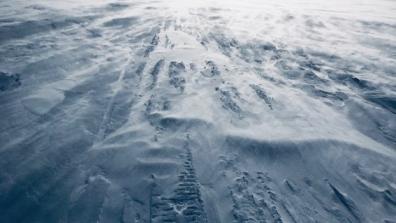
Post 10/12: What has Malaurie done with his hundred years?
He has the longest biography in Who's Who, but his website has expired. If the word living legend exists, Jean Malaurie undoubtedly deserves the title. Ten years ago, I went to listen to him and was blown away by his loquaciousness. Now a hundred years old and retired in Dieppe, does he scan the English Channel in search of lost whale calves to whom he can give a lift? My cousin was his private secretary. The man wasn't easy, but he touched him, as I did. In 1981, a journalist from Télérama, followed by others, issued a warning: beyond his exuberance, the man was a profound mythomaniac. Supposedly fluent, he would only gibber the language of Greenland and, like Jules Verne or André Malraux, would excel at telling tales of ice never trodden. Sad, I at least give him credit for energy: in his "Letter to an Inuit of 2022" written at ninety-three, he harangues the Inuit people: "Stand up! People of Greenland, wake up! Don't give up on your future!" And if Greta Thunberg no longer has a great-grandfather, she could ask Malaurie to play that role.
"The earth is threatened in its reality. May the Inuit citizen of 2022 see the explorers' dream come true: an unpolluted pole where ecological humanism will reign." Posing as a true shamanic guru, Malaurie claims to be connected to the animal world and spirits. Last year at Grise Fiord, I had no guide, no rifle, no knife, I was leaving the comfort of my lodge, carving my own path on the pack ice (or on the frozen earth, it makes no difference). Fearing the bear, should I have connected with the great man, put my life in his hands? I'd like to get to the bottom of it, confront the Malaurie mystery. What would his children, Guillaume-Kutsikitsoq and Éléonore-Ikuma, say if I knocked on their door? In the meantime, everyone holds their breath, waiting for news from Dieppe. Journalists do their job, obituaries have been ready for thirty years, these Malaurie won't be able to rewrite.
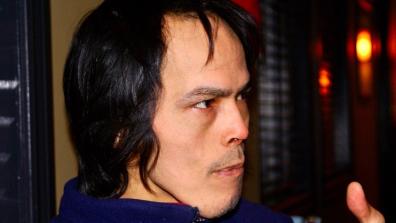
Post 11/12: Where are you, Ben Palluq?
For one day - one night - in December 2006 in Iqaluit, Nunavut, he'd asked me about his disjointed life, revealed under his scalp a claw mark left by a bear as a reminder of a too-close interaction. He told me his first name, which I quickly forgot. The character, however, was unforgettable. Then I set off again in the dark, spending three days - three nights - in the darkness of Pond Inlet. When I returned, I couldn't find him, didn't know his name, and didn't know the secret wound under his hair. April 2022, Resolute airport, I talk to a stranger about my encounter with this man. A nurse by trade, she thinks she's treated him, expects to trace him in one click - it's not him - asks for details, thinks of an old news item, a missing man never found. With another click, a face appears on the screen, this time it's him. A certain Benjamin (Ben) Palluq. An article from March 2014 reports that there has been no news of him for three weeks, that he is an "itinerant" (a homeless person) well known to all, that everyone's assistance is required to gather elements that would help locate him. Two years later, his funeral was held in Iqaluit. Without his remains, which remain unaccounted for. I have to take a break, boarding for Grise Fiord, the last possible stopover in the Far North. An indefinable sadness overcomes me. My interlocutor comforts me, as health personnel know how to do. Later, when the emotion had subsided, I found Ben's sister writing on the web about her grief at losing her beloved buddy, apologizing for her tears. Describing him precisely so that he can be identified, she says nothing about his scar, evoking another accident as traumatic as a bear attack: at the age of seventeen, lost on a snowmobile between Igloolik and Sanirajak, he had been found by his family on the brink of death. As a reminder of the accident that took all his toes, he kept the mark of the cold burns on his skin. We don't always tell the whole story... What have you been doing, Ben, for ten years?
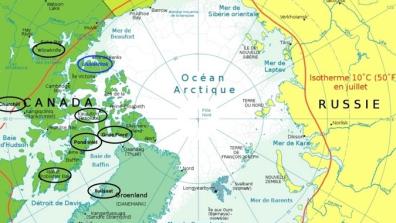
Post 12/12: Final notch
On the train back from Churchill to Winnipeg, I find myself chatting over instant soups, serene, my dream fulfilled: twenty-five years I've been hoping to catch a glimpse of the polar bear, I've ticked it off like a bird of prey from my childhood. But this is not the end of the journey. Quasi-miraculous, enthroned superbly in the middle of a field of cereals on the great prairie, a large canid observes the passage of our train, I tick off the Manitoba wolf in turn! Nature isn't always under control here, but the beauty of this country speaks to my heart. That's remarkable, because sometimes I also seek out the emotion of ugliness. My children know something about this, as I took them to Murmansk, an Arctic dump with a population of three hundred thousand, to discover polar life in the former Soviet bloc. Will the two worlds ever meet? At Grise Fiord on Ellesmere Island, where I stayed last year, alligators, turtles and camels lived millions of years ago. One thousand five hundred kilometers from the North Pole! As a direct consequence, the island is rich in fossils and coal, and Canada Coal has tried - unsuccessfully - to launch a mining project there. Will Grise Fiord one day become the Murmansk of Nunavut? A coal loading port for shipment via the Northwest Passage? An industrial city with docks crumbling under pyramids of containers, gigantic forklift trucks maneuvering day and night, in other words day and then night, huge storage hangars, the mountain gutted to enlarge the runway, hotels, traffic lights and, above all, the abolition of Arctic silence? May the Inuit never sell their Nunavut. The eccentric Donald did suggest acquiring Greenland for an unknown sum, in this he was a recidivist: after the Second World War, his predecessor Harry Truman had offered a hundred million dollars to the Danish government... But I have to get down to earth and from my train, Winnipeg is here three hours late, I hail an electric cab to drop me off at my hotel.
.
Contact: View e-mail
Website : https://www.tanguypiole.com